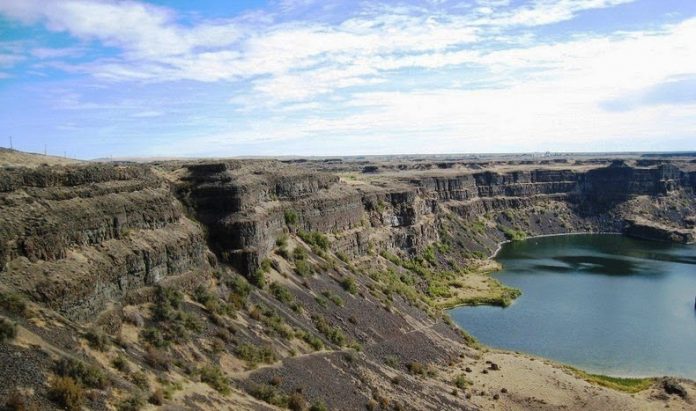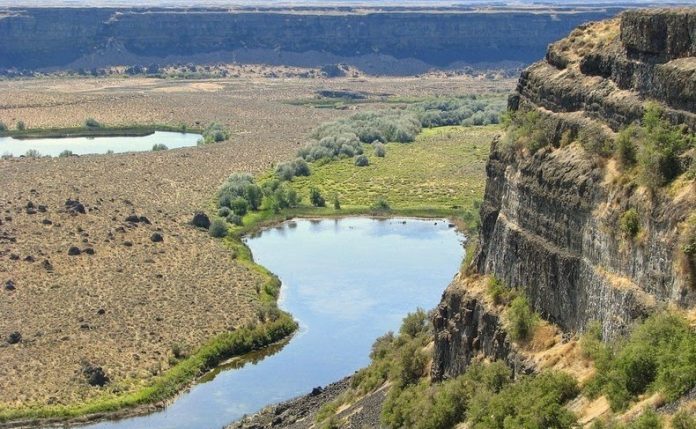Dry Falls located in central Washington, on the opposite side of the Upper Grand Coulee from the Columbia River, is a 3.5-mile long and 400-foot high scalloped precipice. The Dry Falls tells the story of amazing geological phenomena.
From lava flows to the Ice Age floods, and from the Native American legacy to the recent discovery of how Dry Falls was created, the Dry Falls story is revealed to tens of thousands of visitors each year. As the name suggests that Dry Falls no longer carries water, but at one time, it was once the largest waterfall that is famous to have existed on earth.
In its, heyday Dry Falls is five times the width of Niagara Falls and more than twice its height. Dry Falls is said to be a remarkable example of “headward erosion”. The Dry falls are on an ancient course of the Columbia River.
It is guessed that during the last ice age, disastrous flooding channeled water at 65 miles per hour through the Upper Grand Coulee and over this 400-foot rock face. At this time, it is projected that the flow of the falls was 10 times the current flow of all the rivers in the world combined.
Almost 20,000 years ago, as the glaciers moved south through North America, a big ice sheet dammed the Clark Fork River near Sandpoint, Idaho. As a result, a substantial portion of western Montana flooded, forming the enormous Lake Missoula. The water covering 3,000 square miles of northwest Montana, about the volume of Lake Ontario, was locked behind this glacial dam.
Finally, rising water in Lake Missoula broke through the ice dam generating a catastrophic flood that spilled into Glacial Lake Columbia, and then down the Grand Coulee. The huge torrent (recognized as the Missoula Flood) ran wild through the Idaho panhandle, the Spokane River Valley, much of eastern Washington, and into Oregon, flooding the huge area that is now the city of Portland under 400 feet of water.
The great force of the Dry falls eroded away so much earth and rock, that the precipice fell back by 15 miles to its current position. Dry Falls is one of the great geological wonders carved by Ice Age floods is now a stark cliff, 400 feet high and 3.5 miles wide. Today, it overlooks a desert oasis filled with lakes and abundant wildlife.
Once the ice sheet that clogged the Columbia melted, the river reverted to its normal course, leaving the Grand Coulee and the falls dry. Nowadays, this gigantic cliff can be viewed from the Dry Falls Interpretive Center, part of Sun Lakes State Park, and located on Route 17 near the town of Coulee City. It is usually accepted that this process of ice-damming of the Clark Fork, replenishing of Lake Missoula and following catastrophic flooding happened dozens of times over the years of the last Ice Age.






















